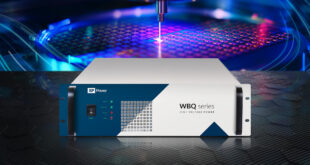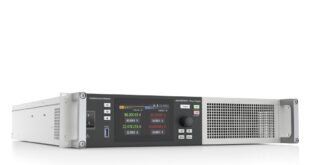Rapid industrial electrification, green energy imperatives, skyrocketing data centre deployments, and transmission and distribution grid capacity constraints are prompting energy stakeholders to adjust the energy mix in favor of nuclear power through Small Modular Reactors (SMRs). According to a new report from global technology intelligence firm ABI Research, 262 SMRs will be deployed globally by 2040, representing an aggregated energy generation capacity of 42 gigawatts (GW). While significant momentum is not expected until 2030, strong growth is anticipated in the second half of the next decade.
“SMRs offer a wide range of benefits,” said Dominique Bonte, Vice President, End Markets and Verticals. “Their inherent upgradeability, flexibility, scalability, and rapid deployability make them suitable for a wider range of more granular, grid-based, and on-site deployment scenarios, such as data centers and industrial sites.
“SMRs provide clean, reliable, high-density, load-following energy sources within small security perimeters, reducing permitting complexity. Moreover, a new generation of SMR designs feature innovative fail-safe passive safety mechanisms and improved sustainability through nuclear waste recycling and optimised lifecycle management, both of which will be instrumental in establishing a more favorable public opinion.”
The fledgling SMR ecosystem comprises both established companies such as Rolls Royce SMR and GE Vernova Hitachi Nuclear Energy, with a long tail of challengers and startups like X-energy, NuScale Power, Aalo Atomics, Holtec, Oklo, Moltex Energy, Stellaria, and Deep Atomic. It benefits from government support in countries like the United States and the United Kingdom, as well as from a healthy investment climate, with startups like NuScale Power and Oklo having gone public and players like X-energy raising private funding from investors including Amazon.
The main barriers to SMR adoption include long regulatory approval cycles for new nuclear designs, as well as lengthy site permitting and environmental impact assessments. While regulators will hold the keys to SMR success, it’s unlikely that a timely alternative capable of meeting future clean energy demands will emerge, with fusion prospects still remote. For most governments, going ahead with SMRs will be very tempting and, in some cases, even unavoidable, to prevent economic slowdowns caused by energy constraints, particularly when it concerns powering the GW datacenters of the future.
These findings are from ABI Research’s Small Modular Reactors (SMRs) – Technologies, Applications, and Forecasts application analysis report, part of the company’s Smart Energy research service, which includes research, data, and ABI Insights.
 Engineer News Network The ultimate online news and information resource for today’s engineer
Engineer News Network The ultimate online news and information resource for today’s engineer


